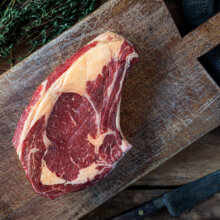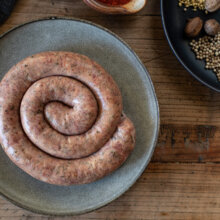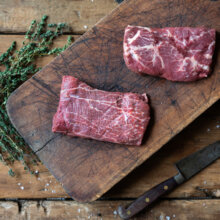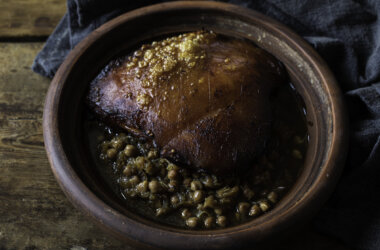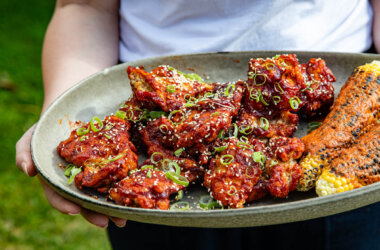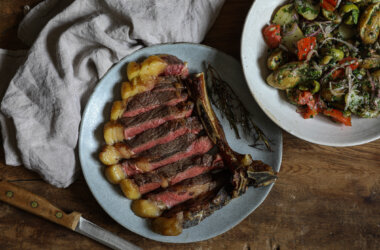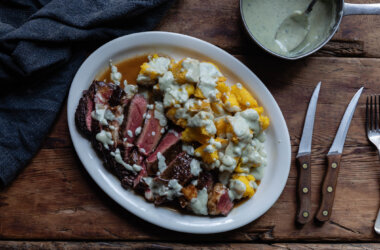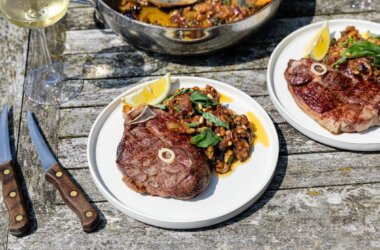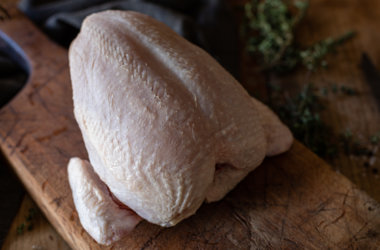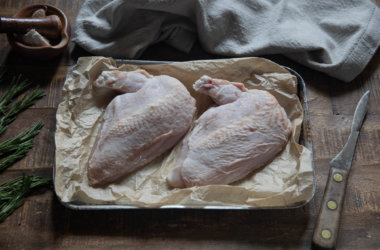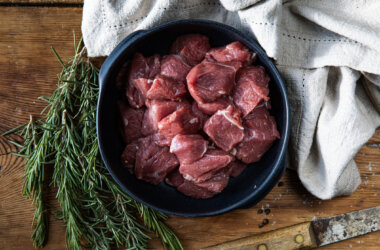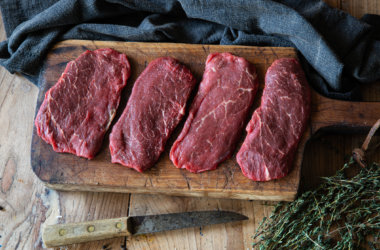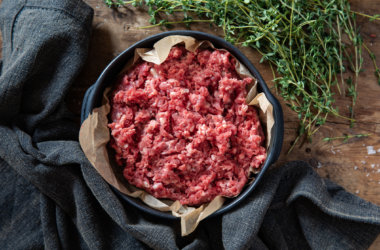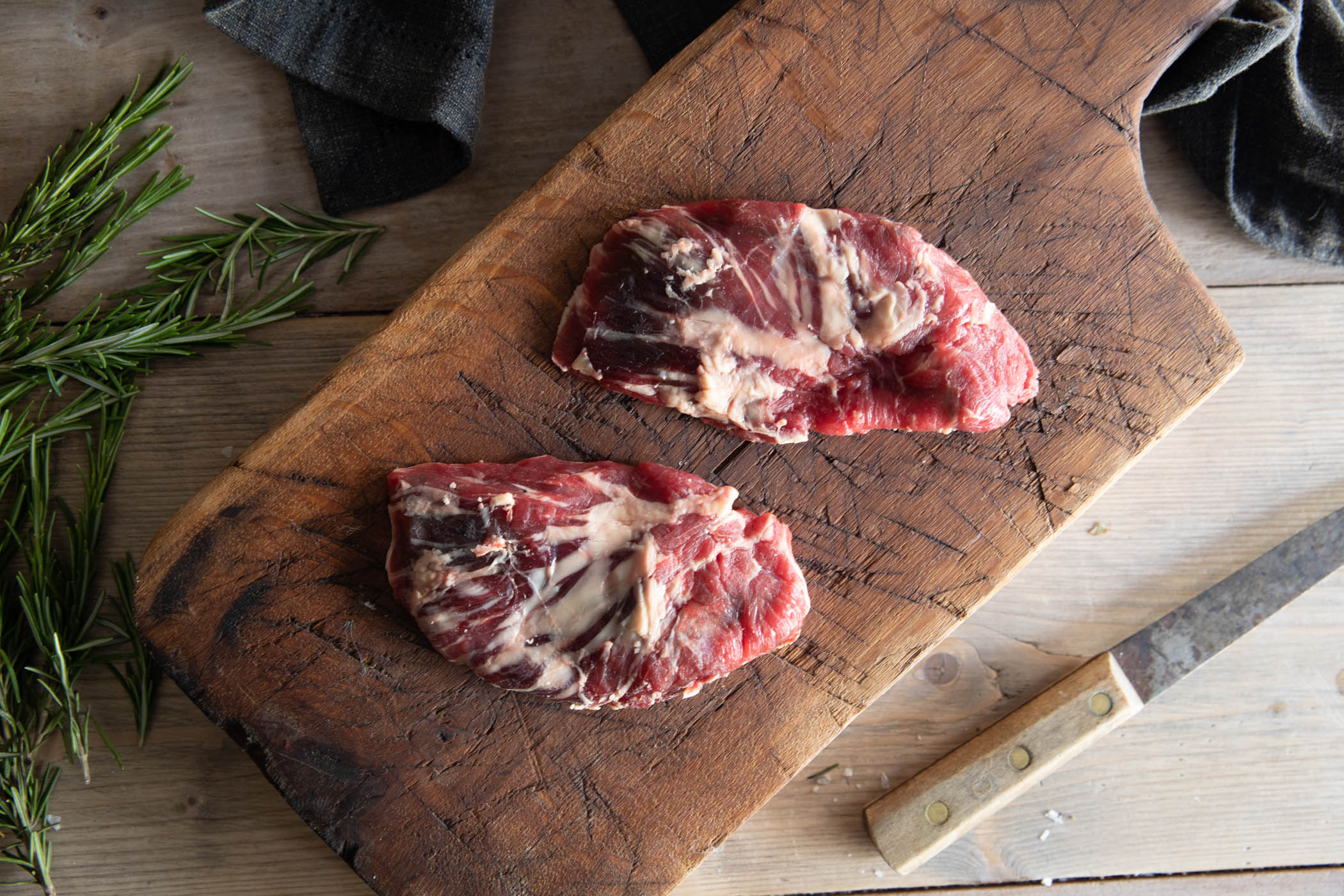
What Is a Spider Steak?
How to Cook Spider Steak: Also known as oyster steak in the US, the spider steak (an Australian term) is taken from the hip joint. Shaped like a kidney or oyster, it is a lesser-known cut with only two per animal – one from each hip. It is marbled with a distinctive web of intramuscular fat and requires a skilled butcher to extract fully intact from inside the hip, along the aitch bone.
This small, flavourful cut is prized for its rich marbling and deep colour. In the UK, it is sometimes referred to as the Pope’s Eye, though this term is also used for the rump, which can lead to confusion. For clarity, we use the term spider steak.
How Long Does It Take to Cook Beef Spider Steak?
Excluding resting time, a quick pan sear of around 4–6 minutes will cook your spider steak to medium-rare or medium. For the best texture and flavour, avoid cooking beyond medium.
How to Cook Spider Steak
- Take your spider steaks out of the fridge and remove them from their packaging. Pat dry with kitchen paper and allow to come up to room temperature.
- Heat a griddle or heavy-based frying pan until smoking hot.
- Just before cooking, rub both sides of the steaks with a neutral oil that has a high smoking point, then season generously with sea salt and cracked black pepper.
- Place the steaks in the hot pan and sear for around 2 minutes on each side. Avoid moving them — they’ll naturally release once a golden crust has formed.
- Reduce the heat slightly and continue cooking for a total of 4–6 minutes, turning every 30 seconds.
- Remove from the pan and rest in a warm place for 6 minutes.
- Slice with the grain to retain tenderness.
Top Tips for Cooking Beef Spider Steak
To check how done your spider steak is, the finger test is a simple and effective guide. Gently press the tip of your middle finger to the tip of your thumb. The fleshy part just below your thumb will feel like medium-rare – soft and yielding but still fleshy. For medium, press your ring finger to your thumb; the area should feel slightly firmer.
For an extra layer of flavour, finish the steaks with a generous knob of quality butter and baste in the final minute or two of cooking. This adds a rich gloss and enhances the natural, beefy character of this flavour-packed cut. Rest well before slicing to lock in juices.
-
Let it rest before cooking
Remove your spider steaks from the fridge and packaging well in advance to bring them up to room temperature. This helps ensure even cooking. -
Use a hot pan and minimal oil
Get your pan smoking hot before the steaks go in. A small amount of oil with a high smoking point (like groundnut or vegetable oil) is all you need. -
Let the pan do the work
Avoid moving the steak around too much. Let it sear undisturbed so a rich, golden crust can develop. -
Turn frequently
Turn your steaks every 30 seconds during cooking to help build an even crust and maintain tenderness. -
Use a thermometer if needed
Spider steak is best served medium-rare to medium. For accuracy, aim for an internal temperature of 54–55°C. -
Add butter at the end
Finish your spider steaks with a generous knob of good-quality butter and baste for extra richness. -
Slice correctly
For the most tender result, slice the meat against the grain once cooked. This breaks up the muscle fibres and ensures a tender bite.
Spider Steak Recipe Ideas
Thanks to their rich depth of flavour, spider steaks are best kept simple. Season well, pan-sear, and serve with a fresh green salad, triple-cooked chips, and something tangy like chimichurri or Dijon mustard. Alternatively, slice thinly and add to fajitas or stir-fries for an extra hit of beefy flavour.
